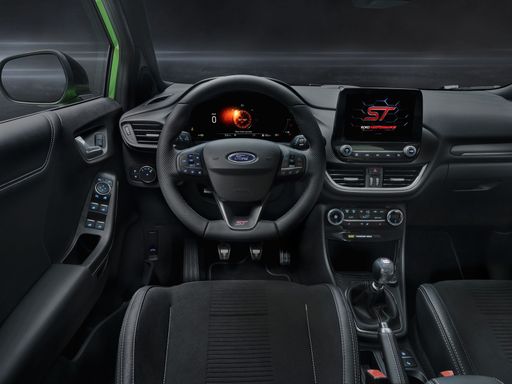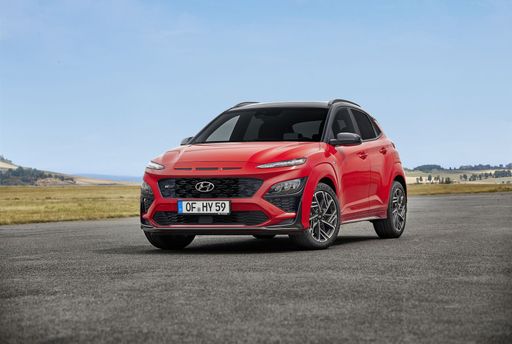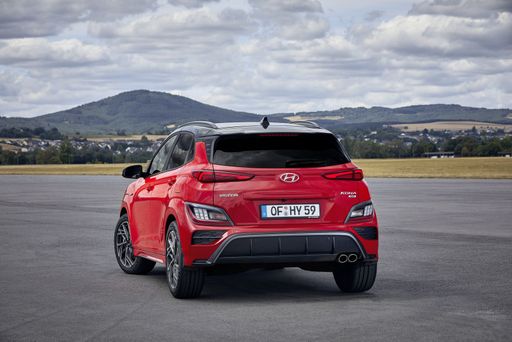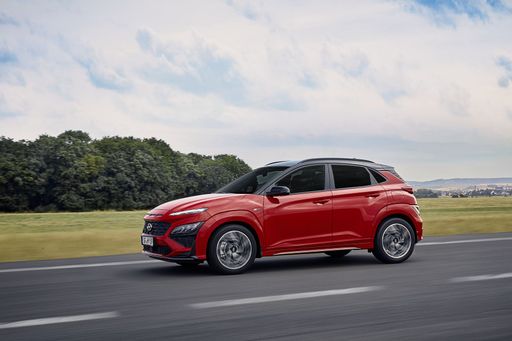Ford Puma vs Hyundai Kona – Kumpi malli toimii paremmin arjessa?
Molemmilla malleilla on vahvuutensa – mutta kumpi sopii sinulle paremmin?
Vertaa suorituskykyä, kulutusta, hintaa ja tiloja suoraan: Ford Puma vai Hyundai Kona?
The compact SUV market has exploded in popularity, and two noteworthy contenders in this space are the Ford Puma and the Hyundai Kona. Both offer modern aesthetics, advanced technology, and a variety of powertrain options, making it crucial for potential buyers to understand their differences. This article aims to provide an in-depth comparison covering technical aspects, innovation, and performance characteristics of these two popular models.
Engine and Performance
The Ford Puma offers a range of engine choices with an emphasis on efficiency. Its petrol line-up includes a mild-hybrid version, providing options such as 125 HP and more powerful variants up to 168 HP. The Puma is also available with an electric powertrain that allows for an electric range of up to 376 km, making it a strong option for environmentally conscious consumers. The 0-100 km/h acceleration times for the Puma range from 7.4 seconds for the quickest variant to 9.8 seconds.
In contrast, the Hyundai Kona features a diverse lineup that includes petrol engines, hybrids, and fully electric variants. The most powerful Kona can deliver up to 218 HP with an impressive 0-100 km/h time of just 7.8 seconds. The Kona electric boasts a remarkable range of up to 514 km, appealing to those who prioritize electric mobility. The combination of the Kona’s all-wheel-drive capability in certain variants also offers enhanced grip and driving security.
Fuel Economy
The Ford Puma scores commendably in fuel efficiency, with consumption figures ranging from 5.4 to 6 L/100 km depending on the variant. The electric version consumes about 13.1 kWh/100 km, making it competitive in its segment.
The Hyundai Kona, however, takes a slightly different approach with its efficiency. Its petrol variants consume between 4.5 and 6.7 L/100 km, while the electric variants see consumption figures as high as 16.8 kWh/100 km. Despite this, the Kona shines with its hybrid options, effectively balancing power and fuel economy.
Interior and Comfort
When it comes to interior space and comfort, both the Ford Puma and Hyundai Kona cater well to families. The Puma features a trunk capacity of 456 to 523 liters, providing ample storage for any adventure. Additionally, the interior design is sleek and equipped with modern technology, enhancing the driving experience.
The Hyundai Kona offers a trunk capacity of 466 liters, presenting a comparable space for cargo. However, the Kona excels with its layout and modern tech features, which include a user-friendly infotainment system and a suite of driver-assistance technologies. Both SUVs comfortably seat five passengers, making them practical choices for urban commuting or weekend getaways.
Safety and Innovations
Safety is a top priority for both manufacturers. The Ford Puma comes equipped with a broad array of features, including pre-collision assist and adaptive cruise control, which contribute to its solid safety credentials.
Similarly, the Hyundai Kona does not fall short in this area, boasting features such as autonomous emergency braking and lane-keeping assist. Both vehicles received respectable ratings from safety organizations, ensuring peace of mind for buyers.
Final Thoughts
Choosing between the Ford Puma and Hyundai Kona ultimately boils down to individual preferences and requirements. The Puma tends to emphasize a sportier drive with its mild-hybrid options, while the Kona presents a more versatile lineup catering to a variety of consumers, particularly those seeking electric and hybrid technologies.
In summary, both the Ford Puma and Hyundai Kona represent the best of what compact SUVs have to offer, combining style, performance, and technology in a way that appeals to a wide range of drivers. Whatever your choice, you can be assured that both models will deliver an engaging driving experience and a host of modern conveniences.
Tässä mennään yksityiskohtiin: tekniset erot tarkemmin
Kustannukset ja kulutus: Taloudellisuudessa on mielenkiintoisia eroja näiden kahden mallin välillä.
Hyundai Kona on hinnassa tuskin havaittava edullisempi – sen lähtöhinta on 26900 €, kun taas Ford Puma maksaa 28900 €. Ero on noin 2000 €.
Polttoaineenkulutuksessa näkyy ero: Hyundai Kona kuluttaa 4.60 L ja on siten pienessä määrin taloudellisempi kuin Ford Puma, jonka kulutus on 5.40 L. Ero on noin 0.80 L /100 km.
Sähkönkulutuksessa etu on Ford Puma:lla. Se kuluttaa 13.10 kWh /100 km ja on jonkin verran energiatehokkaampi kuin Hyundai Kona, jonka kulutus on 14.60 kWh. Ero on noin 1.50 kWh.
Toimintamatkassa Hyundai Kona suoriutuu selvästi havaittava paremmin: se yltää jopa 514 km:een, noin 138 km enemmän kuin Ford Puma.
Moottori ja suorituskyky: Teho, vääntömomentti ja kiihtyvyys ovat autoharrastajien klassisia mittareita – ja erot tulevat tässä hyvin esiin.
Moottoritehossa Hyundai Kona on huomattava etulyöntiasemassa – 218 hv verrattuna 168 hv:een. Ero on noin 50 hv hv.
Kiihdytyksessä 0–100 km/h Ford Puma on kevyt nopeampi – 7.40 s vs. 7.80 s. Ero on noin 0.40 s sekuntia.
Huippunopeus on sama – molemmat yltävät 210 km/h:een.
Vääntömomentissa näkyy myös ero: Ford Puma vetää melkein huomaamaton voimakkaammin, 290 Nm verrattuna 265 Nm:een. Eroa on noin 25 Nm.
Tila ja käytännöllisyys: Sisätilat, tavaratila ja kantavuus ratkaisevat auton arjen käytettävyyden. Mukavuus ja joustavuus ovat avainasemassa.
Molemmissa autoissa on tilaa 5 henkilölle.
Omapainossa Ford Puma on vähäinen kevyempi – 1316 kg verrattuna 1370 kg:een. Painoero on noin 54 kg.
Tavaratilan koossa Ford Puma tarjoaa hieman enemmän – 523 L verrattuna 466 L:een. Ero on noin 57 L.
Maksimikantavuudessa Hyundai Kona pärjää melkein huomaamaton paremmin – jopa 1300 L, noin 17 L enemmän kuin Ford Puma.
Kantavuudessa Hyundai Kona on melkein huomaamaton parempi – 490 kg verrattuna 469 kg:een. Ero on noin 21 kg.
Kokonaisuudessaan Hyundai Kona on ylittää lähes kaikilla osa-alueilla ja nappaa näin DriveDuel Champion -tittelin.
Se vakuuttaa tasapainoisemmalla kokonaisuudellaan ja on käytännöllisempi kumppani arjessa.
Ford Puma
Ford Puma on saanut runsaasti huomiota upealla muotoilullaan ja käytännöllisillä ominaisuuksillaan. Sen kompakti koko yhdistää mukavasti energisen ajokokemuksen ja tilavat tavaratilat. Tämä auto on täydellinen valinta kaupunkiajoon, yhdistäen tyylikkyyden ja toimivuuden saumattomasti.
Tiedot @ puma.fordpresskits.com
@ puma.fordpresskits.com
 @ puma.fordpresskits.com
@ puma.fordpresskits.com
 @ puma.fordpresskits.com
@ puma.fordpresskits.com
 @ puma.fordpresskits.com
@ puma.fordpresskits.com
Hyundai Kona
Hyundai Kona on moderni ja tyylikäs vaihtoehto citymaastureiden joukossa, tarjoten houkuttelevan muotoilun ja käytännöllisiä ominaisuuksia. Sen monipuoliset moottorivaihtoehdot tekevät siitä miellyttävän ajokokemuksen niin kaupunkiajossa kuin pidemmillä matkoillakin. Kona on myös varustettu uusimmalla tekniikalla, mikä lisää turvallisuutta ja mukavuutta ajamiseen.
Tiedot @ hyundai.news
@ hyundai.news
 @ hyundai.news
@ hyundai.news
 @ hyundai.news
@ hyundai.news
 @ hyundai.news
@ hyundai.news

|

|
|
|
|
Kustannukset ja kulutus |
|
|---|---|
|
Hinta
28900 - 42400 €
|
Hinta
26900 - 48500 €
|
|
Kulutus L/100km
5.4 - 5.9 L
|
Kulutus L/100km
4.6 - 7 L
|
|
Kulutus kWh/100km
13.1 - 13.9 kWh
|
Kulutus kWh/100km
14.6 - 16.8 kWh
|
|
Sähköinen toimintasäde
361 - 376 km
|
Sähköinen toimintasäde
377 - 514 km
|
|
Akun kapasiteetti
43 kWh
|
Akun kapasiteetti
1.3 - 65.4 kWh
|
|
CO2
0 - 135 g/km
|
CO2
0 - 163 g/km
|
|
Polttoainesäiliön tilavuus
42 L
|
Polttoainesäiliön tilavuus
38 - 47 L
|
Mitat ja kori |
|
|---|---|
|
Kori
SUV
|
Kori
SUV
|
|
Istuimet
5
|
Istuimet
5
|
|
Ovet
5
|
Ovet
5
|
|
Omamassa
1316 - 1563 kg
|
Omamassa
1370 - 1773 kg
|
|
Tavaratila
456 - 523 L
|
Tavaratila
466 L
|
|
Pituus
4186 - 4226 mm
|
Pituus
4350 - 4385 mm
|
|
Leveys
1805 mm
|
Leveys
1825 mm
|
|
Korkeus
1550 - 1555 mm
|
Korkeus
1580 - 1585 mm
|
|
Maksimi tavaratila
1216 - 1283 L
|
Maksimi tavaratila
1300 L
|
|
Kantavuus
367 - 469 kg
|
Kantavuus
420 - 490 kg
|
Moottori ja suorituskyky |
|
|---|---|
|
Moottorityyppi
Sähkö, Bensiini MHEV
|
Moottorityyppi
Sähkö, Bensiini, Täyshybridi
|
|
Vaihteisto
Automaatti, Manuel
|
Vaihteisto
Automaatti, Manuel
|
|
Vaihteiston tyyppi
Alennusvaihteisto, Manuaalivaihteisto, Kaksoiskytkin automaatti
|
Vaihteiston tyyppi
Manuaalivaihteisto, Kaksoiskytkin automaatti
|
|
Vetotapa
Etuveto
|
Vetotapa
Etuveto, Neliveto
|
|
Teho hv
125 - 168 hv
|
Teho hv
115 - 218 hv
|
|
Kiihtyvyys 0-100 km/h
7.4 - 9.8 s
|
Kiihtyvyys 0-100 km/h
7.8 - 11.9 s
|
|
Huippunopeus
160 - 210 km/h
|
Huippunopeus
162 - 210 km/h
|
|
Vääntömomentti
170 - 290 Nm
|
Vääntömomentti
200 - 265 Nm
|
|
Sylinterien lukumäärä
3
|
Sylinterien lukumäärä
3 - 4
|
|
Teho kW
92 - 124 kW
|
Teho kW
85 - 160 kW
|
|
Iskutilavuus
999 cm3
|
Iskutilavuus
998 - 1598 cm3
|
Yleiset |
|
|---|---|
|
Mallivuosi
2025
|
Mallivuosi
2024 - 2025
|
|
CO2-tehokkuusluokka
A, D
|
CO2-tehokkuusluokka
A, D, C, E, F
|
|
Merkki
Ford
|
Merkki
Hyundai
|
Onko Ford Puma saatavana eri vetotavoilla?
Mallia tarjotaan Etuveto-versiona.
Näytetyt hinnat ja tiedot ovat arvioita, jotka perustuvat Saksan listahintoihin, ja voivat vaihdella maittain. Nämä tiedot eivät ole oikeudellisesti sitovia.
